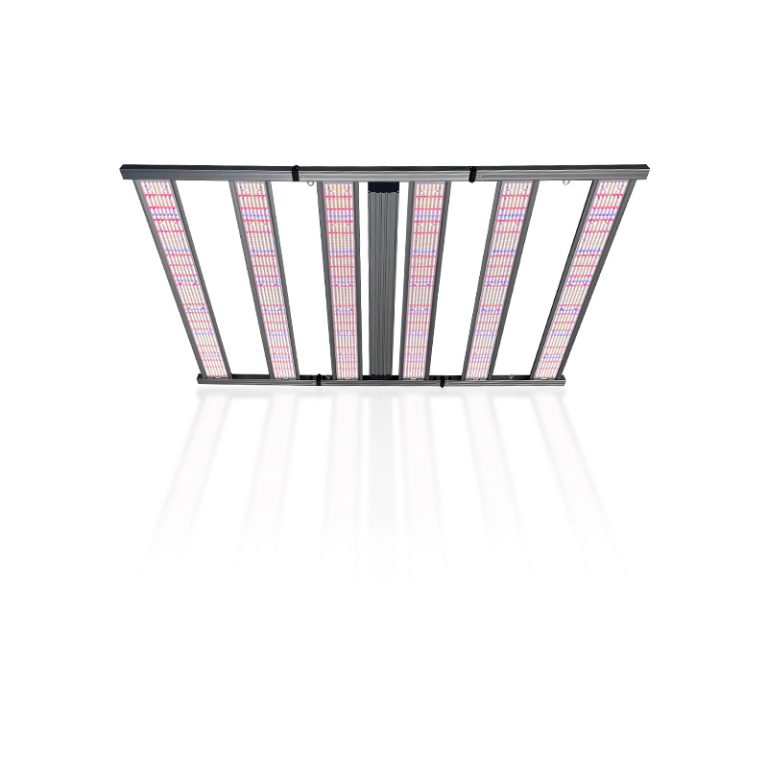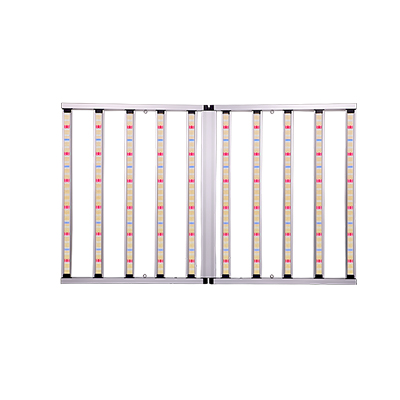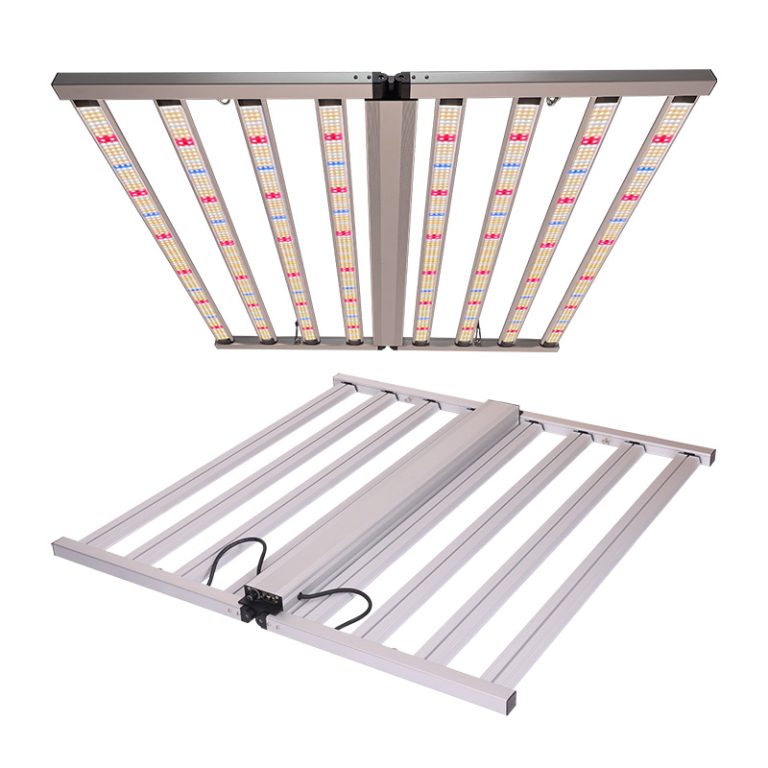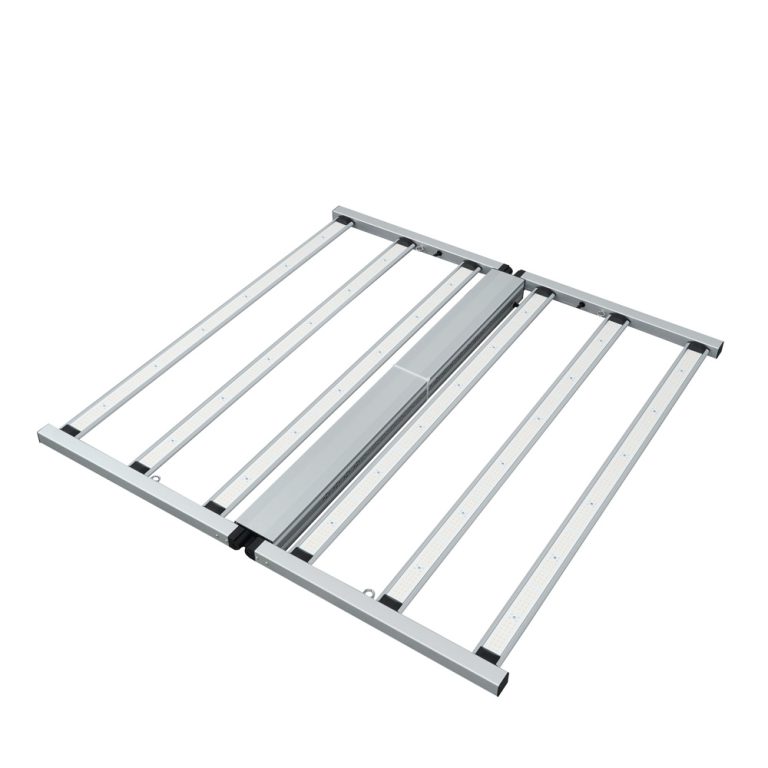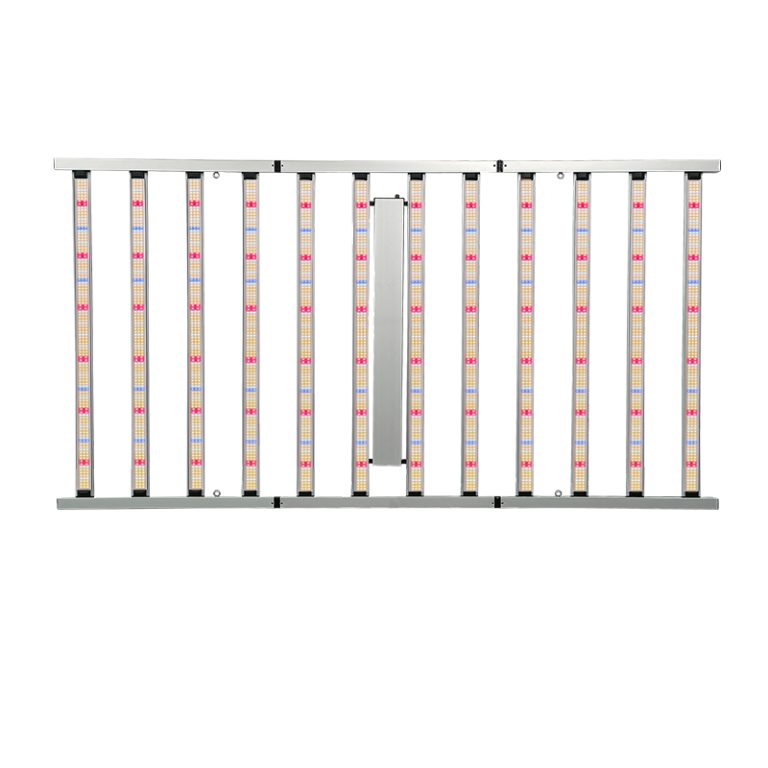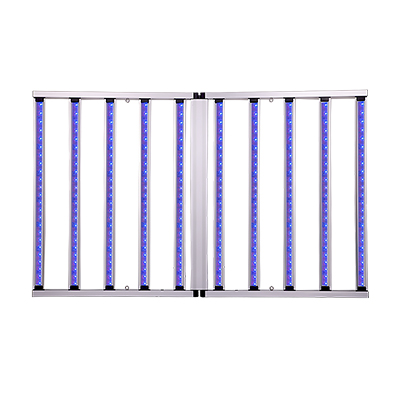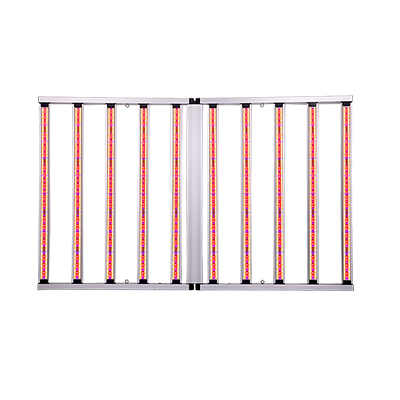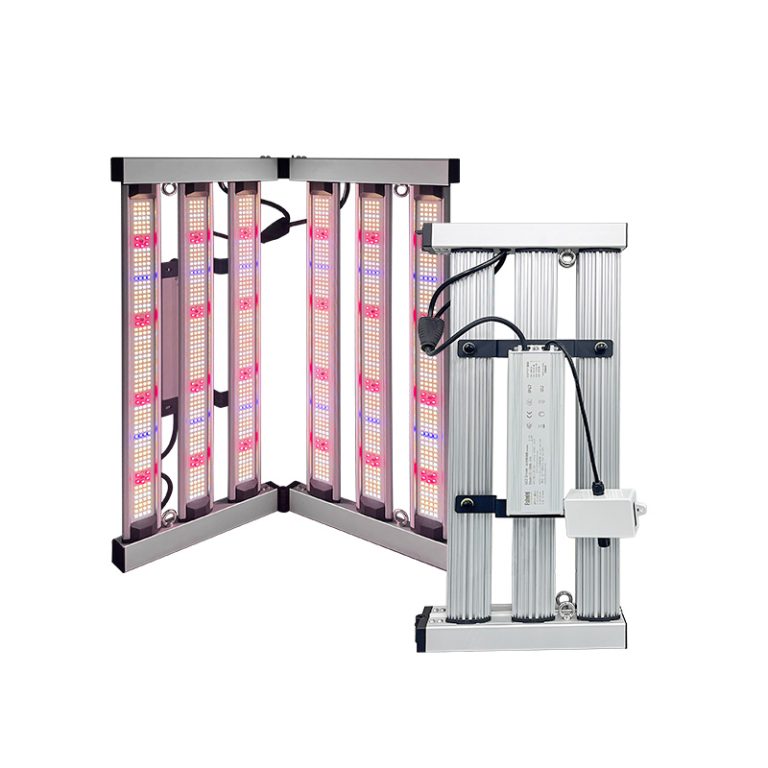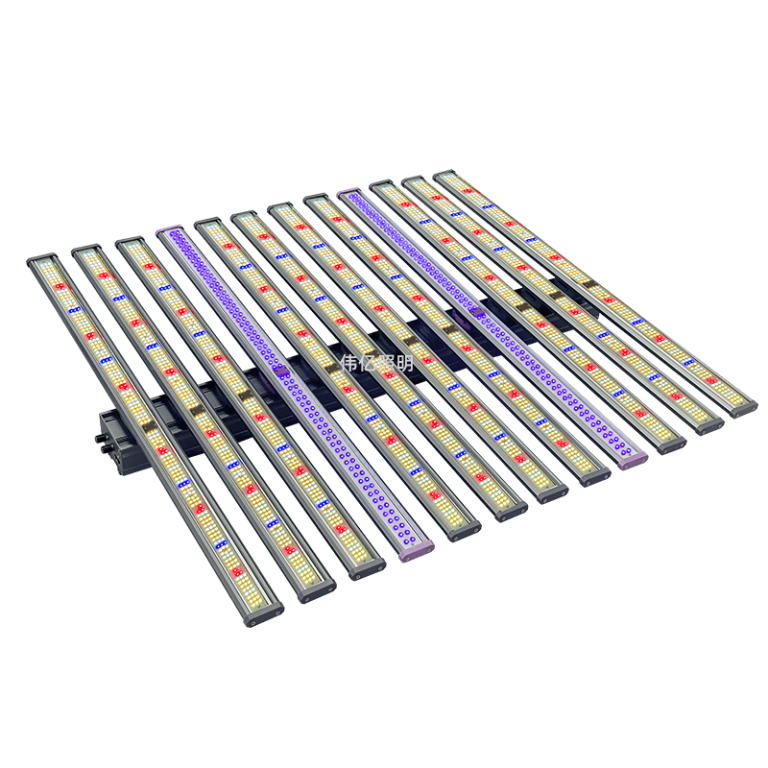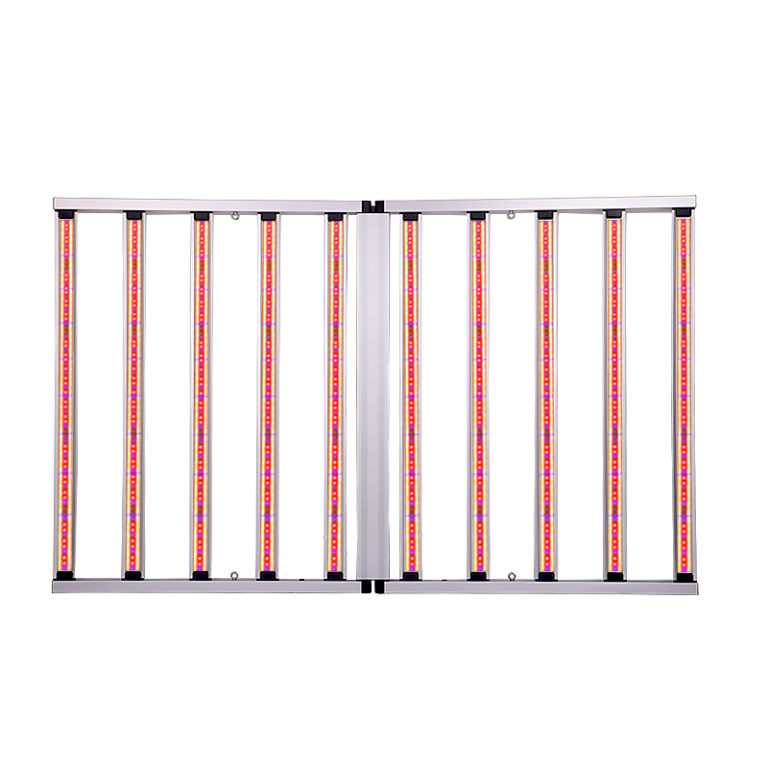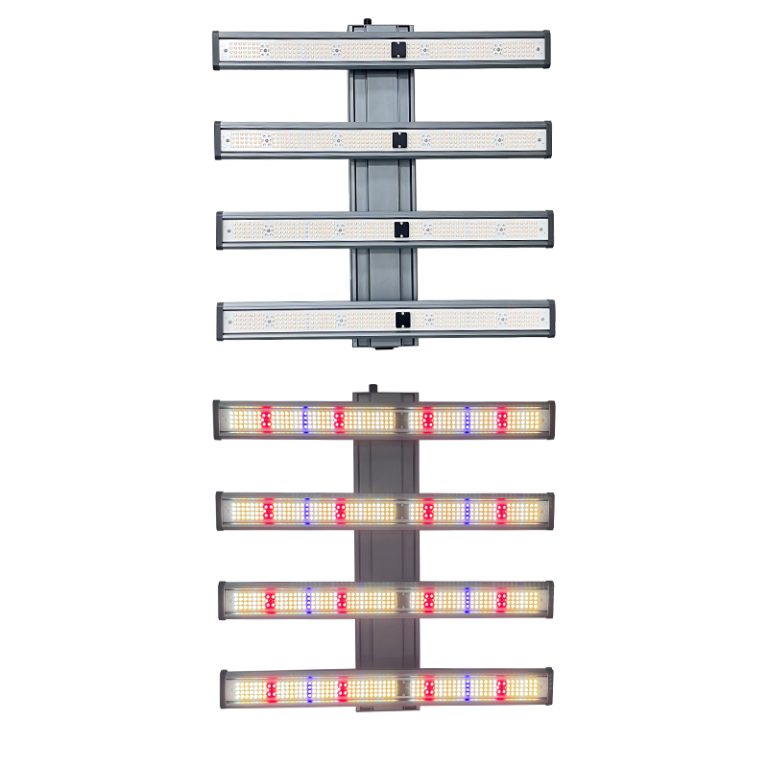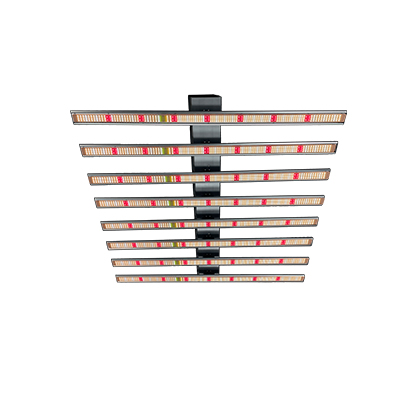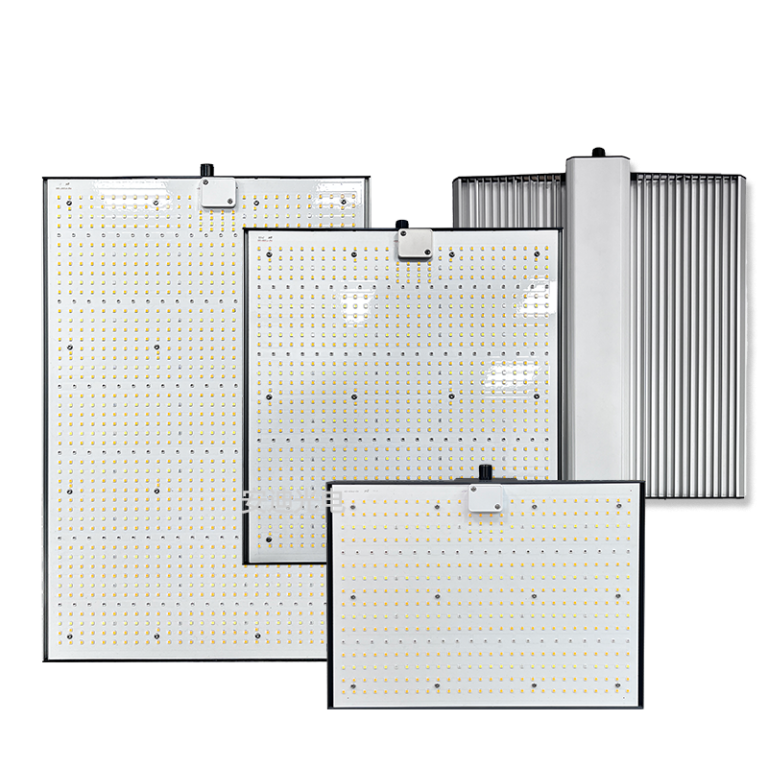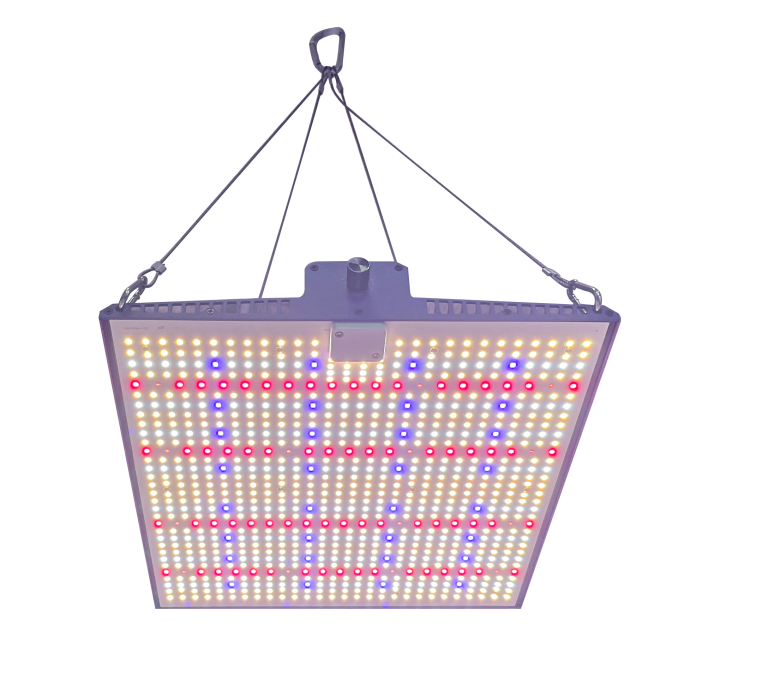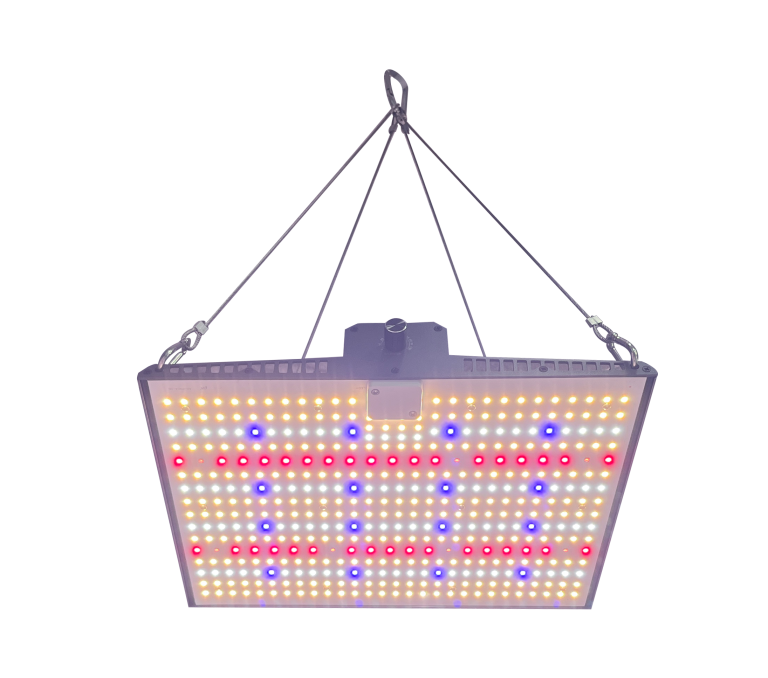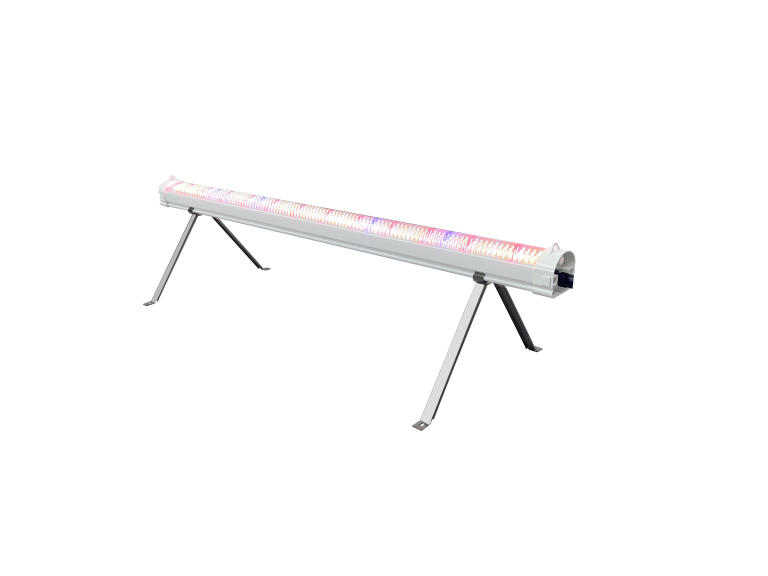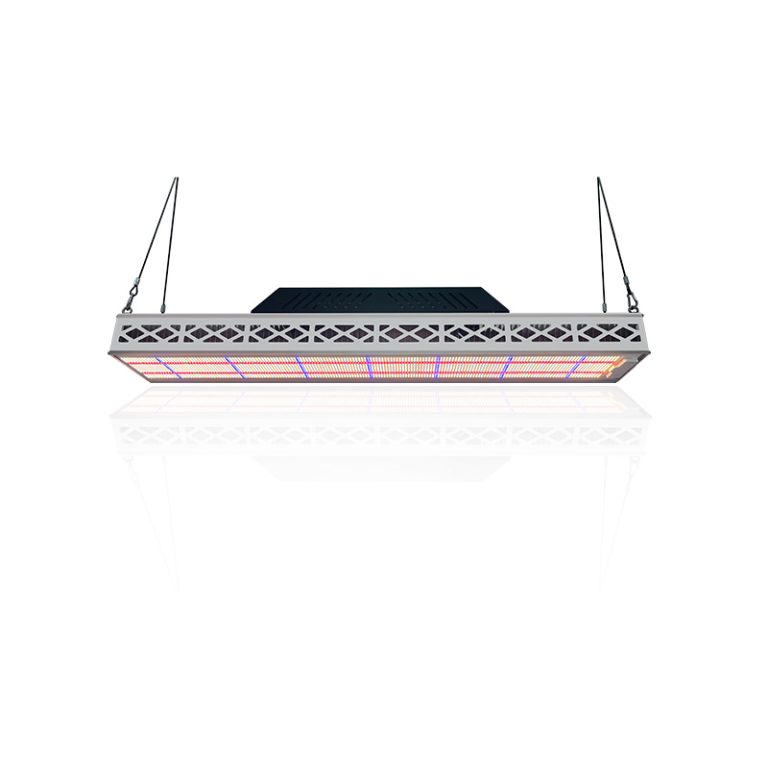faq
- home
- faq
FAQS
- PAR (Photosynthetically Active Radiation): This refers to the spectrum of light (400-700 nm) that is crucial for plant photosynthesis. High PAR output in LED grow lights is essential for maximizing plant growth and yield in indoor gardening and hydroponics.
- PPF (Photosynthetic Photon Flux): This measures the total amount of PAR emitted by LED grow lights per second, expressed in micromoles per second (µmol/s). A higher PPF value indicates a more effective grow light, ideal for supporting robust plant growth and healthy foliage.
- PPFD (Photosynthetic Photon Flux Density): This metric assesses the amount of PAR that reaches a specific area (usually one square meter) per second, measured in micromoles per square meter per second (µmol/m²/s). Ideal PPFD levels depend on the type of plants being cultivated and their growth stage, making it vital for optimizing light intensity in both indoor and greenhouse settings.
Ideal LED grow lights should provide a suitable R/B (red to blue light) ratio, with peak wavelengths around 450nm (blue light) and 660nm (red light), to maximize photosynthetic efficiency. Additionally, the lights should deliver appropriate levels of PPF and PPFD to support healthy plant growth and development. By adjusting these metrics, growers can optimize plant photomorphogenesis and production efficiency.
Choosing LED grow lights with high PAR, PPF, and appropriate PPFD values can significantly enhance the growth and productivity of various plants, from seedlings to flowering stages, making them a top choice for serious growers in the horticultural industry.
The wattage of LED grow lights typically ranges from 10W to 200W, which can meet the needs of most home growers. However, for commercial cultivation, especially in large-scale operations, many LED grow lights can reach several hundred or even thousands of watts. This is to meet the needs of larger growing areas and plants with high light demands. Here are some specific factors:
1. Demand for Large-Scale Cultivation
In large-scale cultivation, plants generally have higher light requirements, especially during the nutrient and flowering phases. High-wattage lights can cover a larger growing area, ensuring that each plant receives adequate light to promote growth and increase yield.
2. Advantages of High-Power Lights
Many high-wattage LED lights (such as 500W, 1000W, or even 1200W) are suitable for large-scale agriculture, providing stronger light output, which is particularly important for high-light-demand crops like vegetables, fruits, and flowers. This level of light intensity effectively enhances photosynthesis, promoting healthy plant growth and higher yields.
3. Light Uniformity
In large-scale cultivation, ensuring uniform light distribution is key. High-wattage LED grow lights not only provide more light but also distribute it over a larger area, reducing shadow zones and improving overall cultivation efficiency.
4. Adaptability to Different Growth Stages
For large-scale cultivation, choosing LED lights with adjustable wattage is a common practice, allowing for adjustments in light intensity during different growth stages (such as seedling, vegetative, and flowering phases). This helps meet the varying needs of plants at each stage, optimizing growth conditions.
5. Additional Considerations
When using high-wattage LED grow lights, it’s essential to ensure proper heat dissipation and airflow to prevent overheating, thereby extending the lifespan of the lights. Additionally, correctly configuring the power supply and voltage is crucial for stable operation.
Conclusion
For home growing, LED grow lights with wattages between 10W and 200W are generally sufficient, while for commercial cultivation, opting for higher-wattage lights (ranging from several hundred to thousands of watts) is a wise choice. This not only meets the light requirements of high-demand plants but also improves cultivation efficiency and yield. By reasonably selecting and configuring LED grow lights according to specific growth conditions and plant types, growers can significantly enhance their cultivation success.
1. General Guidelines
•Height Impact on Light Intensity: The distance between the grow light and the plant significantly affects light intensity. For instance, the difference in light intensity at 18 inches versus 36 inches can be as much as 75%.
• Recommended Heights:
• Seedling Stage: Maintain a distance of approximately 24-26 inches (about 60-65 cm).
• Vegetative Stage: Adjust the height to 18-22 inches (about 45-55 cm).
• Flowering Stage: Bring the light closer, maintaining a distance of 15-30 cm.
2. Individual DifferencesAmong Grow Lights
Each LED grow light is different due to variations in LED brands, lens types, and wattages. Manufacturers typically provide recommended hanging heights, but these are general estimates and may not apply to every situation.
3. Best Distance Range
For most LED grow lights, the optimal distance from the plants is generally between 0.5 meters (about 20 inches) and 1 meter (about 40 inches). This range helps ensure that plants receive adequate light while avoiding leaf burn or insufficient light exposure.
4. Adjusting for Growth Stages
The distance should be adjusted based on the plant's growth stage:
• Seedling Stage: Plants have lower light requirements; maintain a distance of about 40-60 cm.
• Vegetative Stage: As light needs increase, gradually bring the light closer, targeting a distance of 20-40 cm.
• Flowering Stage: Light needs remain high; keep the light at a distance of 15-30 cm.
5. Additional Considerations
• Adjusting LightSpectrum: Select the appropriate light spectrum based on plant type and growth stage. For example, blue light promotes leaf growth, while red light encourages flowering and fruiting.
• Controlling LightDuration: Most plants require 12-16 hours of light daily. Using a timer can help regulate light exposure.
• Managing Light Intensity: Be cautious of placing lights too close, which can cause leaf burn, or too far, which can lead to inadequate light. Adjust both intensity and distance as needed.
By following these guidelines, you can optimize the distance of your LED grow lights to promote healthy plant growth throughout their life cycle.
1. Heat Generation in LED Grow Lights
LED grow lights, like all electronic components, produce heat during operation. While they are more efficient than traditional lighting options, they still convert a significant portion of their energy—approximately 80%—into heat rather than light. This heat generation can lead to increased temperatures within the lighting unit.
2. Impact of Heat on Performance
If the heat produced by LED lights is not effectively dissipated, it can negatively impact their performance. High temperatures can cause the LEDs to fail prematurely, reducing their lifespan and light output efficiency. For instance, if the temperature exceeds 100°C, it can accelerate the degradation of the light fixture and its components.
3. Importance of Cooling Measures
Given the potential for overheating, effective thermal management and cooling design are crucial for LED grow lights. Although the heat output is relatively low compared to traditional bulbs, the concentrated emission of light from the LEDs can create localized hot spots. If not managed, these hot spots can lead to significant thermal issues.
4. Recommendations for Cooling
To ensure optimal performance and longevity, it is essential to implement additional cooling measures, such as:
• Ventilation: Ensure adequate airflow around the lights to help dissipate heat.
• Heat Sinks: Use heat sinks to draw heat away from the LED components.
• Fans: Incorporate fans to actively circulate air and lower temperatures.
5. Conclusion
In summary, while LED grow lights produce less heat than traditional lighting, they still require proper cooling to maintain performance and longevity. Implementing effective cooling strategies is necessary to prevent overheating and ensure that the lights operate efficiently throughout their lifespan.
The best light schedule for plants can vary depending on the specific plant species and its growth stage, but here are some general guidelines based on the factors you mentioned:
1. Duration of Light Exposure: Most plants benefit from 12 to 16 hours of light per day. This duration helps to maximize photosynthesis while allowing enough time for the plant to rest during the dark period.
2. Light Intensity: Ensure that the light is of adequate intensity for the plant type. For example, high-light plants (like many vegetables and flowering plants) may require more intense light than low-light plants (like ferns).
3. Light Quality: Use full-spectrum lights that mimic natural sunlight, as different wavelengths can influence growth and chlorophyll production.
4. Light Schedule Consistency: Maintain a consistent light schedule to help regulate the plant's internal clock, which influences growth and development.
5. Dark Period: It's essential to include a dark period (8 to 12 hours) to allow the plants to perform respiration, which is crucial for growth and energy balance.
6. Adjust for Growth Stage: Seedlings may benefit from slightly longer light periods, while flowering plants might require adjustments based on their specific light requirements.
Overall, a light schedule of 12-16 hours of light followed by 8-12 hours of darkness is generally effective for most plants, but individual needs may vary.
Leave a message
Whatever the occasion, whether you’re buying for yourself or to distribute, we have it all! Send us inquiry to find out about our volume discounts.

